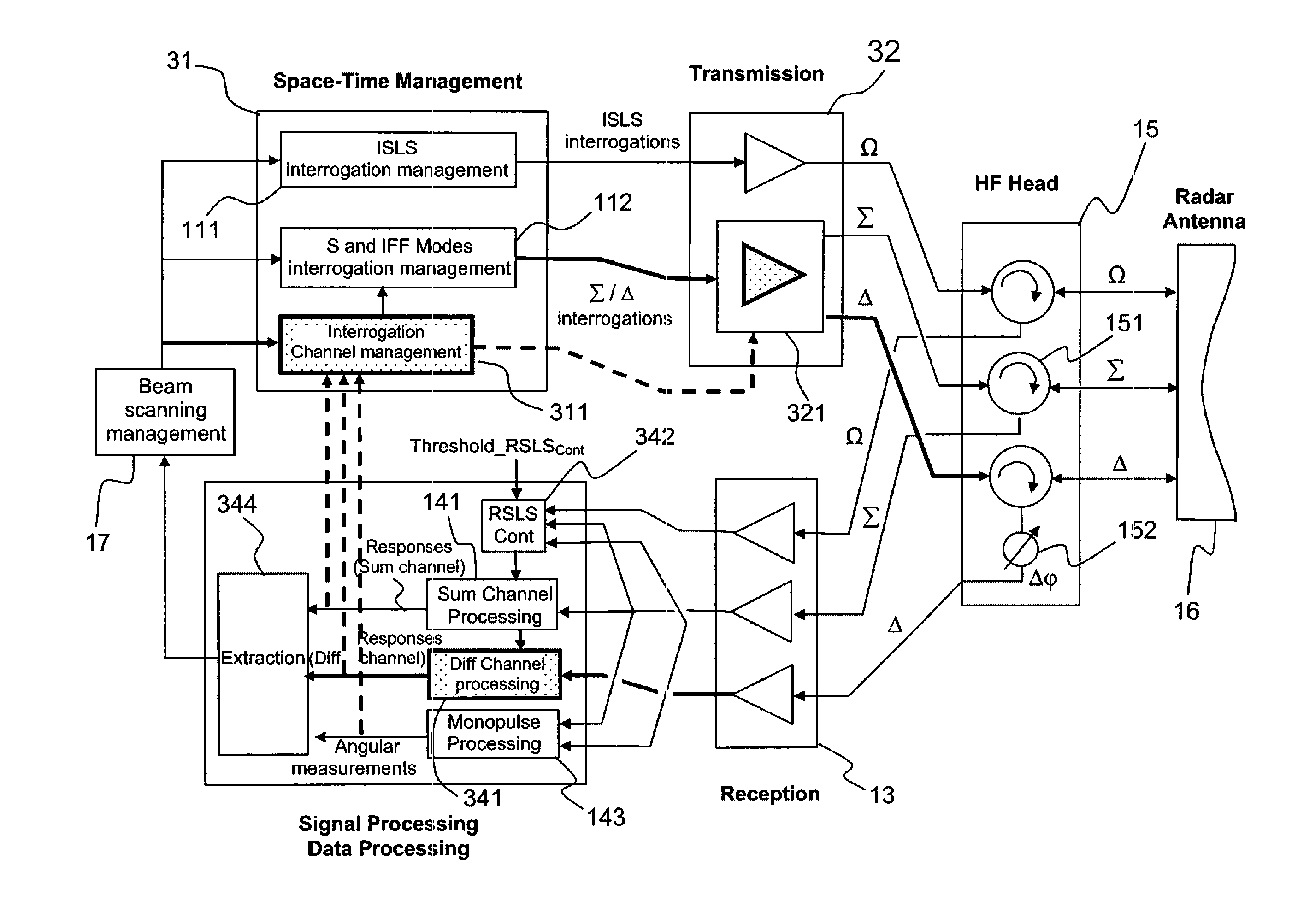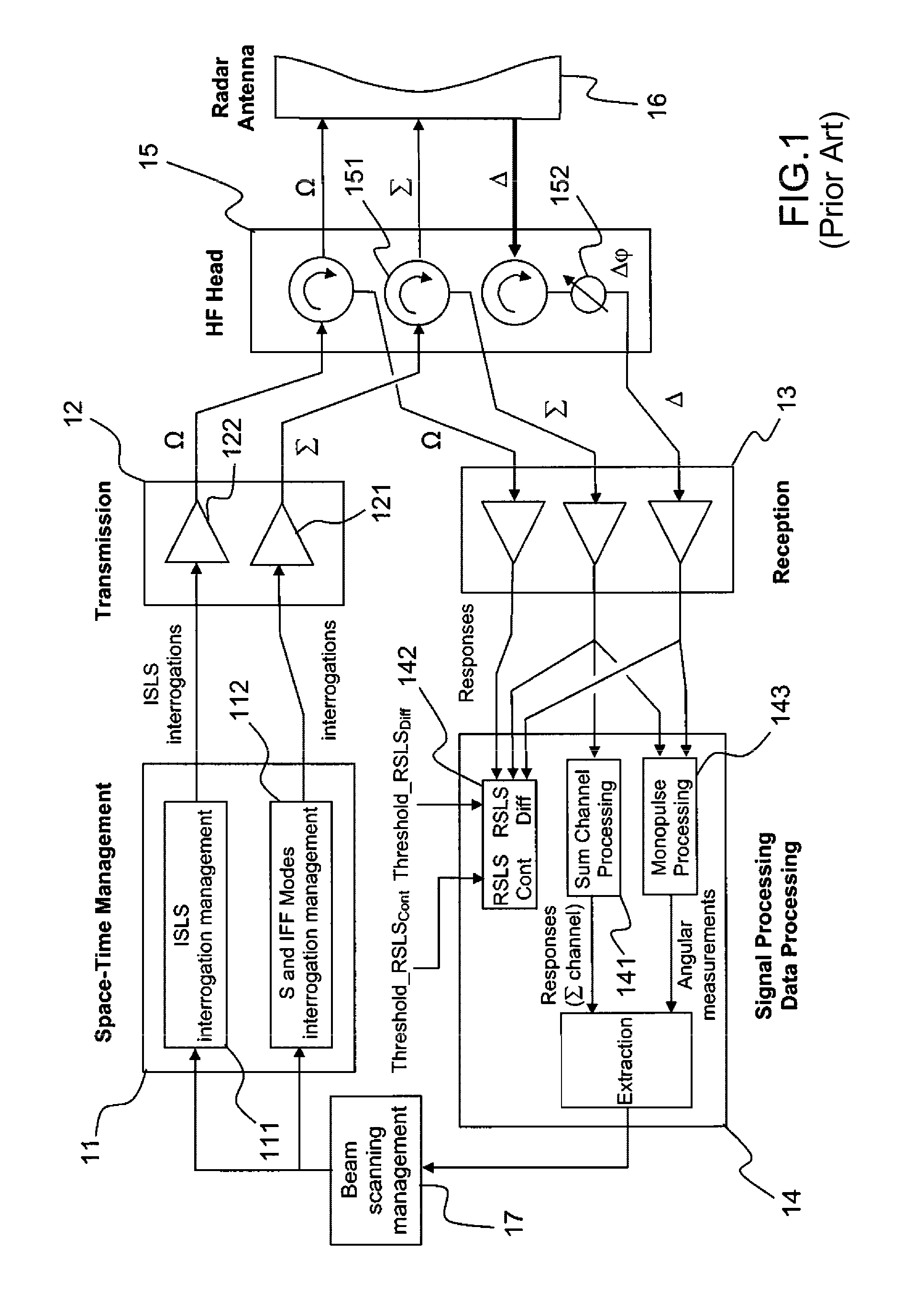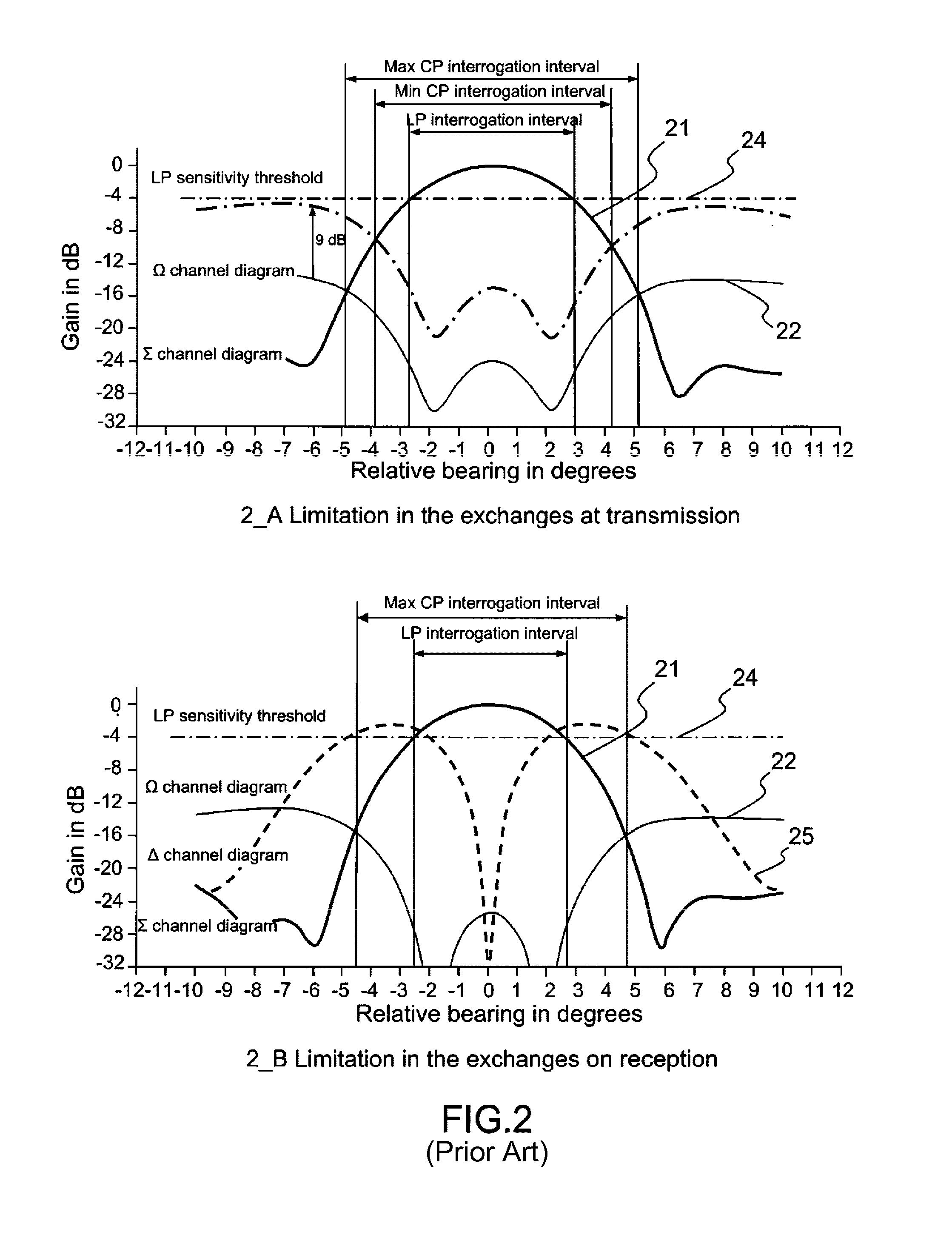Method for increasing the time for illumination of targets by a secondary surveillance radar
a secondary surveillance and radar technology, applied in the direction of reradiation, measurement devices, instruments, etc., can solve the problems of limited effective interrogation arc of radar (1030 mhz), limited use of signals in transmission and reception, and incompatibility with operational limitations
- Summary
- Abstract
- Description
- Claims
- Application Information
AI Technical Summary
Benefits of technology
Problems solved by technology
Method used
Image
Examples
Embodiment Construction
[0055]As is shown by the diagram in FIG. 1, the architecture of a current secondary surveillance radar operating in S and / or IFF modes may be broken down into various functional blocks amongst which may be identified:
[0056]The Space-Time Management 11 (STM), which notably manages the transmission of the SSR interrogation messages in S Mode or in IFF mode by taking into account the radar tasks to be performed relating to the targets whose presence in the antenna beam (main lobe) is predicted by taking into account past events;
[0057]The Transmitter 12 (TX), which converts the interrogation messages into high-power RF signals at a frequency F1 (1030 MHz), and transmits these signals for their radiation by the antenna;
[0058]The Receiver 13 (RX), which demodulates the RF signals received by the antenna at a frequency F2 close to F1 (1090 MHz);
[0059]The processor for processing the signal 14 (SP) which processes the signals coming from the receiver and which detects and decodes the respon...
PUM
 Login to View More
Login to View More Abstract
Description
Claims
Application Information
 Login to View More
Login to View More - R&D
- Intellectual Property
- Life Sciences
- Materials
- Tech Scout
- Unparalleled Data Quality
- Higher Quality Content
- 60% Fewer Hallucinations
Browse by: Latest US Patents, China's latest patents, Technical Efficacy Thesaurus, Application Domain, Technology Topic, Popular Technical Reports.
© 2025 PatSnap. All rights reserved.Legal|Privacy policy|Modern Slavery Act Transparency Statement|Sitemap|About US| Contact US: help@patsnap.com



